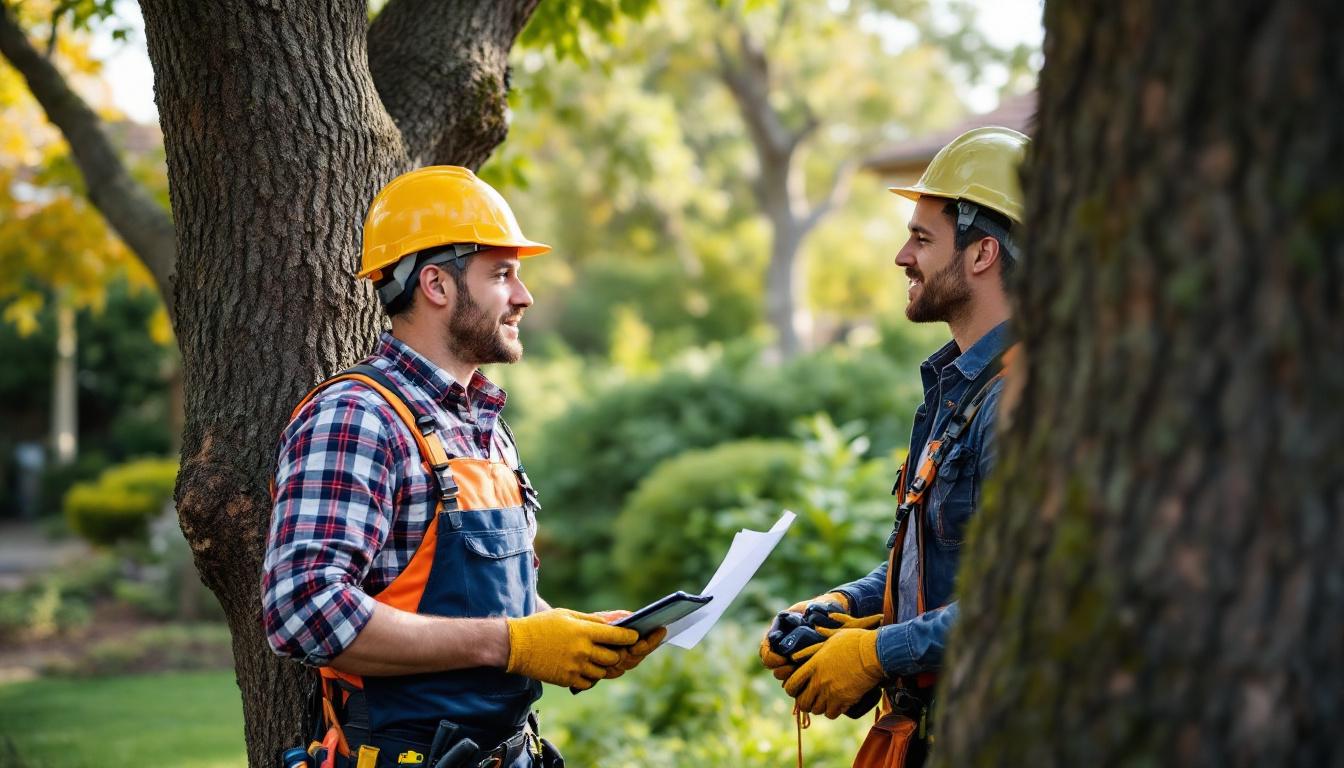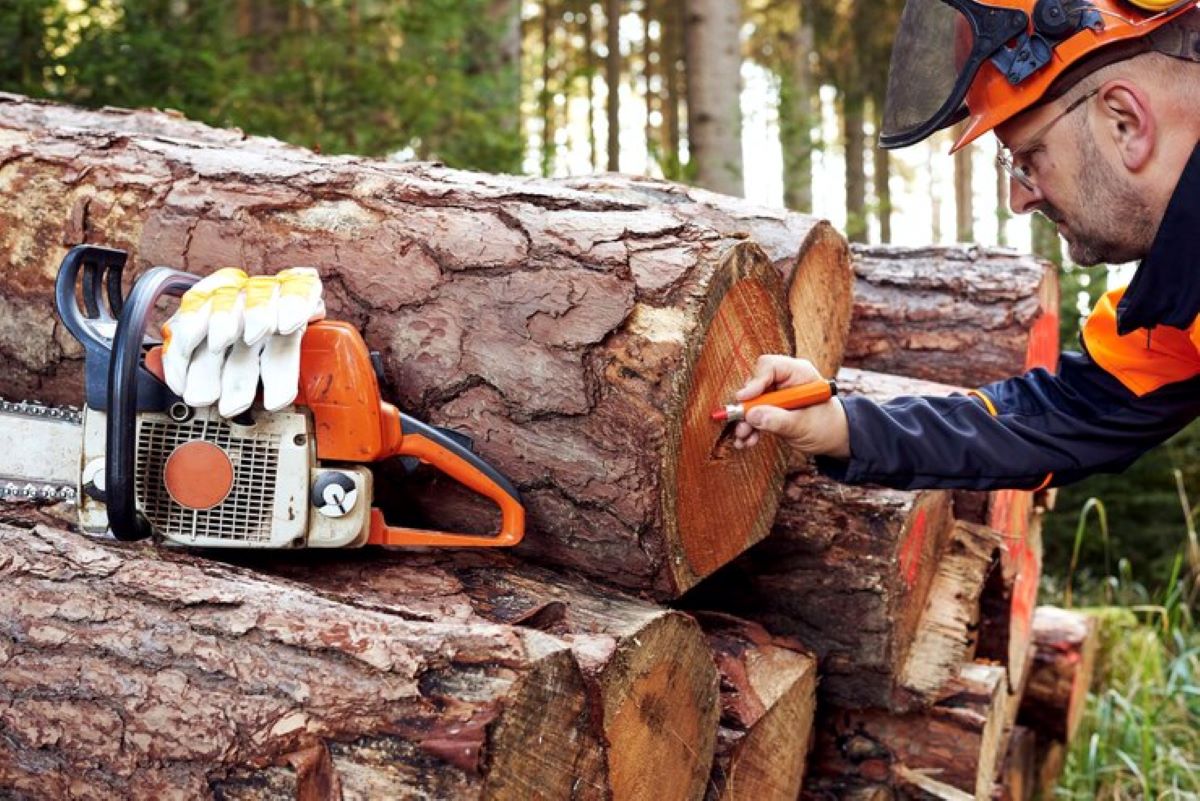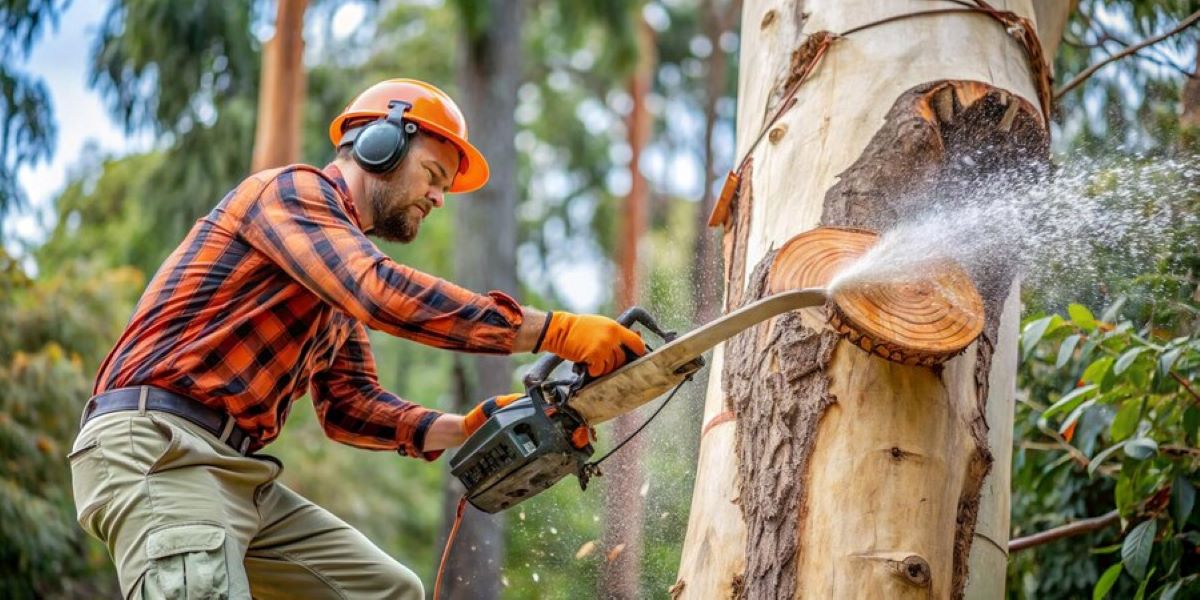What Are the Benefits of Using Native Trees for Privacy Screening in Pennant Hills?
The native trees that residents of Pennant Hills choose for privacy screening offer practical and environmental benefits that imported species simply cannot match. These trees create essential boundaries between properties, reduce noise, and block unwanted views in this increasingly developed suburb.
The Benefits of Using Native Trees for Privacy Screening
Using indigenous species for natural privacy screening has three key advantages:
- Climate adaptation: Native trees have evolved to thrive in Pennant Hills’ warm, humid summers and mild winters. This means they require less water and maintenance compared to exotic alternatives.
- Ecosystem support: Local species provide habitat and food sources for native birds, insects, and wildlife that depend on these plants for survival.
- Soil compatibility: Indigenous plants are naturally suited to the area’s clay-based soils and drainage patterns that are common throughout the Hills District.
Why Choose Native Trees for Privacy Screening?
The choice of which native trees are best for privacy screening in Pennant Hills depends on your specific needs. However, understanding local vegetation and planning ahead—especially if future Pennant Hills tree removal might be required—can help you make smarter planting decisions.
All native options offer distinct advantages:
- They are more resilient to local pests, diseases, and extreme weather conditions.
- They establish faster root systems in soil conditions they are familiar with.
- They reduce the risk of transplant failure.
- They support the overall ecological health of the region.
What Makes a Tree Suitable for Privacy Screening in Pennant Hills?
Effective privacy screening trees must reach sufficient height to block views from neighbouring properties and streets. Trees should achieve at least 3-4 meters for standard residential screening, though taller options up to 15 meters suit properties requiring complete visual barriers.
Key Factors in Choosing Privacy Screening Trees
- Density: The most critical privacy screening criteria. Trees with naturally thick, bushy growth habits create impenetrable visual barriers without gaps.
- Growth Rate: Determines how quickly your privacy materialises. Fast-growing species establish screening within 2-3 years, whilst slower varieties may take 5-7 years to provide adequate coverage.
- Local Climate Suitability: Ensures trees thrive in Pennant Hills’ warm, humid summers and mild winters without requiring excessive intervention.
- Evergreen Foliage: Maintains year-round privacy, unlike deciduous trees that shed leaves seasonally.
- Maintenance Requirements: Influences long-term success. Consider whether you’re prepared for regular pruning, shaping, and general upkeep.
The Importance of Density in Privacy Screening
Density stands as the most critical privacy screening criteria. Trees with naturally thick, bushy growth habits create impenetrable visual barriers without gaps. The foliage should extend from ground level upward, preventing sight lines through the lower branches.
Understanding Growth Rates for Effective Screening
Growth rate determines how quickly your privacy materialises. Fast-growing species establish screening within 2-3 years, whilst slower varieties may take 5-7 years to provide adequate coverage.
Ensuring Local Climate Suitability
Local climate suitability ensures trees thrive in Pennant Hills’ warm, humid summers and mild winters without requiring excessive intervention.
The Role of Evergreen Foliage in Year-Round Privacy
Evergreen foliage maintains year-round privacy, unlike deciduous trees that shed leaves seasonally. This characteristic proves essential for consistent screening regardless of season.
Considering Maintenance Requirements for Long-Term Success
Maintenance requirements influence long-term success. Consider whether you’re prepared for regular pruning, shaping, and general upkeep. Some species demand frequent attention to maintain neat forms, whilst others naturally develop dense tree growth habits with minimal intervention.
Which Callistemon (Bottlebrush) Varieties Are Best for Privacy Screening?
Callistemon privacy screens can reach heights of up to 10 metres, making them excellent choices for substantial boundary coverage. These native screening plants develop dense foliage that creates effective barriers whilst producing distinctive red, pink, or cream bottlebrush flowers that attract native birds and pollinators.
The versatility of Bottlebrush trees in Pennant Hills shows in their widespread use throughout local parks and streetscapes. Different varieties suit various garden sizes:
- Callistemon viminalis (Weeping Bottlebrush): Grows 6-8 metres, ideal for larger properties
- Callistemon ‘Little John’: Compact at 1-2 metres, perfect for smaller gardens or layered screening
- Callistemon ‘Captain Cook’: Medium height at 2-3 metres, suitable for mid-level privacy
These hardy plants tolerate Pennant Hills’ climate variations whilst requiring minimal water once established. Their year-round green foliage maintains privacy during all seasons, with seasonal flowering adding vibrant colour without compromising the screening density.
How Do Viburnums Serve as Effective Screening Hedges?
Viburnum hedges reach approximately 4 meters in height, positioning them perfectly for mid-level privacy screening in Pennant Hills properties. This moderate stature makes them ideal for blocking sightlines from neighbouring windows or creating defined garden boundaries without overwhelming smaller spaces.
The fragrant flowers Viburnum produces appear as clusters of delicate white blooms, releasing a sweet scent throughout spring. These blossoms later develop into small red berries that attract native birds whilst adding seasonal colour variation to your screening. The dual ornamental features transform a functional privacy barrier into an attractive garden feature.
Screening shrubs Pennant Hills residents favour Viburnums for their remarkably dense growth habit that fills in quickly without demanding constant attention. The naturally compact branching structure creates solid coverage year-round, requiring only occasional trimming to maintain shape. This low-maintenance characteristic proves particularly valuable for busy homeowners seeking effective privacy solutions without weekly gardening commitments.
The species adapts well to the local climate conditions, tolerating both full sun and partial shade positions common throughout Which Native Trees Are Best for Privacy Screening in Pennant Hills landscapes.
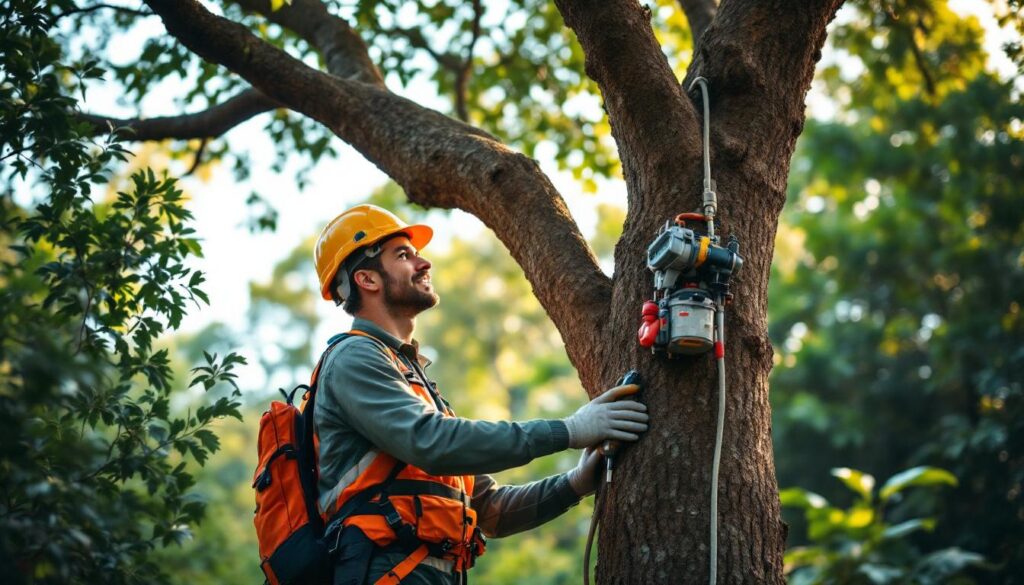
Why Is Lilly Pilly a Popular Choice for Fast-Growing Privacy Screens?
Lilly Pilly’s fast growth makes it an excellent option for homeowners seeking quick privacy solutions in Pennant Hills. These Australian garden trees establish rapidly in the area’s cooler climate, often adding substantial height within the first few growing seasons.
The dense, glossy leaves create year-round coverage that doesn’t thin during winter months. New growth emerges in attractive bronze or copper tones before maturing to deep green, adding visual interest throughout the year. The compact branching habit naturally forms thick screens without requiring extensive pruning.
Privacy screens with berries offer additional benefits beyond visual barriers. Lilly Pillys produce edible pink berries that attract native birds whilst providing harvest opportunities for homemade jams and preserves. Different varieties offer varying berry sizes and flavours, from sweet to mildly tart.
The species adapts well to Pennant Hills’ soil conditions and rainfall patterns. Most varieties tolerate both full sun and partial shade positions, making them versatile for different garden orientations. Their root systems remain relatively contained, reducing concerns about damage to nearby structures or underground services.
What Advantages Does Leighton Green Offer as a Tall Privacy Hedge?
Leighton Green delivers exceptional height for complete privacy, reaching up to 15 metres tall with rapid growth rates that establish screening faster than most alternatives. This tall privacy tree creates an effective natural barrier within just a few years of planting.
The dense foliage of Leighton Green hedge trees responds beautifully to pruning and shaping, allowing homeowners to create either formal geometric hedges or softer, informal screens. The species maintains its compact form when regularly trimmed, making it ideal for properties with specific aesthetic requirements.
Shaping hedges native trees like Leighton Green provides an eco-friendly alternative to timber fences whilst supporting local wildlife. The evergreen nature ensures year-round coverage without seasonal gaps. Property owners in Pennant Hills appreciate how these trees blend seamlessly with the natural bushland character of the area whilst providing substantial screening from neighbouring properties.
The adaptability to various soil types and the species’ resilience to local weather conditions make Leighton Green a practical choice for establishing permanent privacy boundaries.
How Can Cypress Pine Be Used Effectively Despite Its Pruning Needs?
Cypress Pine thrives in the hot and humid conditions typical of Pennant Hills and surrounding suburbs. This native species delivers rapid vertical growth, creating an effective needle-leaf privacy screen within a relatively short timeframe.
The tree’s vibrant green needles offer a distinctive texture that contrasts beautifully with broader-leafed plants in your garden. This unique foliage creates visual interest whilst maintaining year-round coverage. Cypress Pine adapts well to the local climate, tolerating temperature fluctuations and moisture levels common throughout the Hills District.
Cypress Pine pruning becomes essential to maintain the desired shape and density. Regular trimming—typically two to three times annually—prevents the tree from becoming leggy or sparse. Without consistent maintenance, Cypress Pine can develop an untidy appearance that compromises its screening effectiveness.
The species works particularly well as a hot humid climate tree option for properties in West Pennant Hills, Cherrybrook, and Dural. When determining which native trees are best for privacy screening in Pennant Hills, consider Cypress Pine if you’re prepared to commit to its maintenance schedule and desire a textured, columnar screening solution.
See Also : Arborist Crows Nest how to manage tree height restrictions in urban areas
Where Are These Native Screening Trees Commonly Found Around Pennant Hills?
The native trees Hornsby Shire residents rely on can be found in established estates and public reserves throughout the region. Places like Pennant Hills Park, Pennant Hills Golf Club, and various residential developments showcase mature examples of Callistemon, Lilly Pilly, and Leighton Green creating natural boundaries between properties.
Screening plants Cherrybrook Dural Kenthurst areas are commonly seen in:
- Heritage estates along New Line Road and Castle Hill Road
- Public reserves such as Bidjigal Reserve and Excelsior Reserve
- Street plantings in West Pennant Hills residential areas
- Private gardens in Kenthurst’s semi-rural properties
Both Hornsby and Hills Shire councils include these species in their local government area landscaping plans. Their green space planning documents specifically recommend native screening trees for two reasons: providing privacy while also supporting local bird populations, native insects, and maintaining ecological corridors between bushland reserves. These plantings help strengthen habitat connectivity in fragmented urban landscapes, allowing wildlife to move safely between preserved natural areas.
How to Choose the Right Native Tree for Your Privacy Needs in Pennant Hills
Choosing native trees for a privacy screen is successful depends on evaluating your property’s specific conditions and your willingness to maintain them. Start by measuring your available space and determining how much height you need—compact gardens suit 4-meter Viburnums, while larger properties can accommodate 15-meter Leighton Greens.
Key selection factors include:
- Garden size tree selection: Measure boundary length and width to avoid overcrowding
- Soil type and drainage: Lilly Pillys prefer well-drained soil, whilst Cypress Pines tolerate various conditions
- Sunlight exposure: Most native screening trees require full sun to partial shade
- Desired density: Fast-growing species like Leighton Green provide quicker coverage
Maintenance of native plants varies significantly between species. Cypress Pine demands regular pruning, whereas Viburnums require minimal intervention. Combining multiple species creates a layered screening effect—plant taller Callistemon at the back with mid-height Lilly Pillys in front for visual depth and enhanced privacy. Match tree characteristics with your aesthetic preferences, whether you prefer the colourful bottlebrush flowers or the formal appearance of shaped hedges.
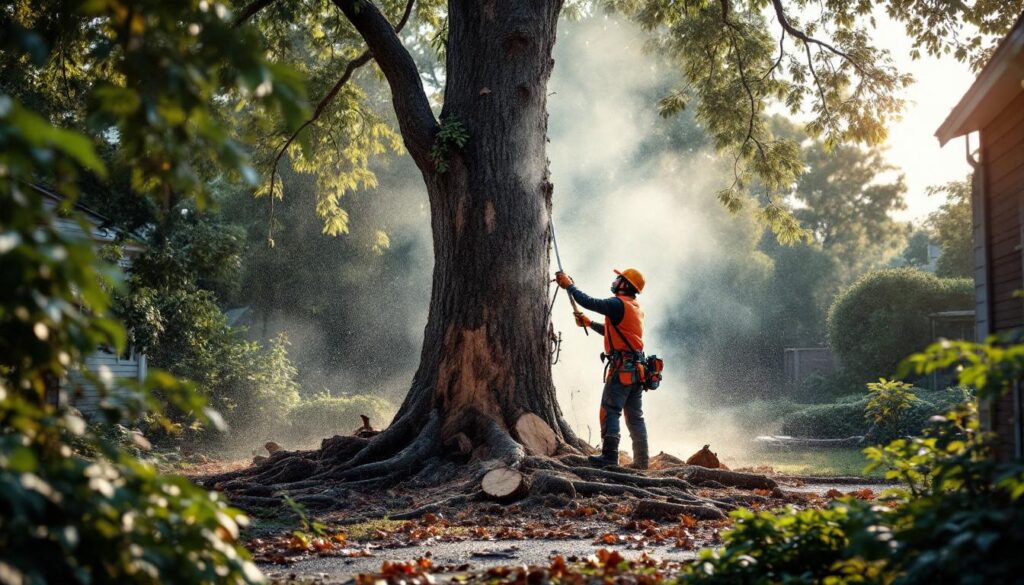
Why Native Trees Are Your Best Bet for Privacy Screening in Pennant Hills?
Which native trees are best for privacy screening in Pennant Hills? The species covered in this guide—Callistemon, Viburnum, Lilly Pilly, Leighton Green, and Cypress Pine—represent the most effective natural fencing alternatives that thrive in local conditions whilst supporting sustainable gardening NSW principles.
Choosing the best native trees for privacy screening that Pennant Hills residents can rely on delivers multiple advantages beyond simple boundary definition. These species have evolved alongside local wildlife, providing essential habitat for native birds, insects, and pollinators. Their established root systems help prevent soil erosion, particularly important in the undulating terrain characteristic of the Hills District.
Native screening trees require less water once established compared to exotic alternatives, reducing your environmental footprint and maintenance costs. They resist local pests and diseases naturally, eliminating the need for chemical interventions that harm beneficial insects.
Ready to create your perfect privacy screen? Visit local nurseries in Pennant Hills, Cherrybrook, or Dural where staff understand regional microclimates and soil conditions. Consulting with landscaping experts familiar with Hornsby and Hills Shire regulations ensures your planting complies with local guidelines whilst maximising screening effectiveness.
The right native tree selection transforms your property into a private sanctuary that celebrates Australian flora. Your choice supports local biodiversity, reduces maintenance demands, and creates a living screen that improves with age—benefits no artificial fence can match.
More to Read : Arborist Crows Nest how to manage tree height restrictions in urban areas
Quick FAQs: Native Trees for Privacy Screening in Pennant Hills
They thrive in local climate, support wildlife, need less water, and suit Pennant Hills’ soil conditions.
2. Which trees are best for year-round screening?
Evergreen natives like Callistemon, Lilly Pilly, Leighton Green, and Cypress Pine provide continuous coverage.
3. How tall should screening trees grow?
Effective screens typically range from 3–15 meters depending on property size and desired privacy.
4. Why is density important for privacy?
Thick, bushy foliage prevents sightlines and ensures effective coverage without gaps.
5. Which species grow fast for quick privacy?
Lilly Pilly and Leighton Green establish quickly, often providing substantial screening within a few years.
6. Are flowering or fruiting trees suitable?
Yes—Callistemon and Viburnum add colour, attract birds, and maintain dense foliage for privacy.
7. Do native trees require maintenance?
Some species like Cypress Pine need regular pruning, while Viburnums and Callistemon are low-maintenance. Layering species can reduce upkeep.
8. Where are these trees commonly planted?
Private gardens, public reserves, street plantings, and heritage estates in Pennant Hills, Cherrybrook, Kenthurst, and Dural.
9. How to choose the right native tree?
Consider garden size, soil type, sunlight exposure, desired height, and maintenance ability. Mix species for layered screening and visual appeal.
10. Why are native trees better than fences?
They enhance biodiversity, reduce water use, resist local pests, prevent soil erosion, and improve the landscape aesthetically.








